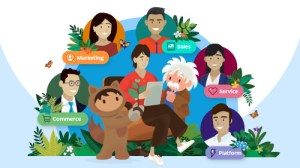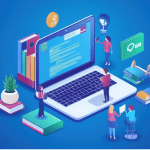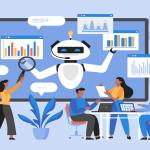New technology can be exciting, but it can also be difficult to know where you should focus. This is especially true if you are leading transformation for your enterprise. Legacy systems, organisational changes, and return on investment all need to be considered.
As the pace of change accelerates, every industry is facing disruption, both from new technology and from competitors. Add rapidly evolving customer expectations, and you may find you’re having a hard time keeping up.
Customers care about more than just your products and services, too. For example, 85% of customers say that their purchasing decisions are influenced by how an organisation treats its employees.
With these things in mind, here are six ways you can prepare for the future of work, starting today.
Create flexible and supportive working arrangements
Businesses that are flexible about work options appear more attractive to job-seekers. In the long run, these enterprises will incur lower costs with fewer overheads and salary demands.
According to the EY 2021 Work Reimagined Employee Survey, more than half of all respondents in Singapore, Malaysia, Indonesia, and the Philippines said they would quit their jobs if their employer did not provide flexibility in where they could work. However, 60% of Singaporean respondents to our Employee Engagement Report said their employers have limited or no technology to support flexible work.
Having the means to collaborate and communicate with colleagues around the world can make all the difference for your employees. It will make them more productive, too — teams using collaboration platform Slack are able to close more deals, resolve issues faster, and improve customer satisfaction.
Focus on results
Businesses that measure employee productivity through good results and customer feedback, rather than the hours they put in, are well-placed for the future of work. Gone are the days of clocking in and out to measure employee effectiveness — today we have much more sophisticated options available to us.
Establishing KPIs for your employees helps your teams focus on what’s important. The right tools are needed for proper measurement to get quality data. Only with an established data culture, you can derive deep insights that help your enterprise prepare for the future of work.
Ultimately, the best measure of employee effectiveness is customer satisfaction. There are established metrics that are still useful for day-to-day operation, but with modern solutions you can start to measure metrics such as Return on Experience to make sure that you are delivering the service that your customers expect.
Adapt business models to meet customer expectations
As technology advances, customers expect businesses to move forward too. According to the latest State of the Connected Customer Report, customers expect to communicate with companies online more than 60% of the time. Fifty-seven percent of customers prefer to deal with businesses online, and that number gets higher for younger audiences. If you don’t have the means to provide a smooth online experience, you could be missing out on business.
Customers are interested in more than just products and services — 88% of customers expect companies to clearly state their values. Two thirds of customers have stopped buying from a company whose values didn’t align with theirs — up from 62% in 2020. Issues such as climate change, social issues and community involvement are top of mind.
Improve employee experience
There are many factors that contribute to a good employee experience (EX), and it’s been shown that poor EX can have an impact on your bottom line. In Singapore, 71% of employees say struggling with outdated and inefficient technology has a direct impact on their work.
By modernising the tools that your employees use every day, you can streamline their experience, leading to higher satisfaction and higher efficiency. When we surveyed workers in Singapore, more than half said that software to help them communicate and collaborate with colleagues would improve their workplace experience.
Every business’s culture is unique — make sure yours is working for you and your teams.
Keep customer communications transparent
It’s more important than ever to maintain customer trust. Out-of-stock products,
delayed deliveries, and poor customer service can cause significant damage to a business’s reputation. Use all your available communication channels to let your customers know if your business isn’t running as usual.
Of course, this relies on having the right tools to understand when the service you provide to your customers isn’t working as intended. Solutions such as Commerce Cloud help you automate your operations, while also empowering you with cutting-edge AI to improve your customer experience.
Scale as your business grows
With improved security and flexibility, cloud-based storage and applications give businesses a long-term competitive advantage in a changing world. However, not all cloud-based services are created equal. Make sure that the solution you choose has best-in-class security certification, integrations with all your other software, and has the power to scale with your business as it grows.
Want to learn more?
Download our latest eBook to learn how to ‘Prepare your Business for a Digital Future’.




























